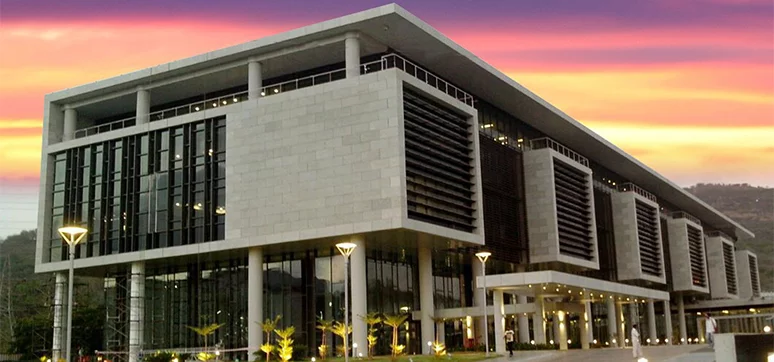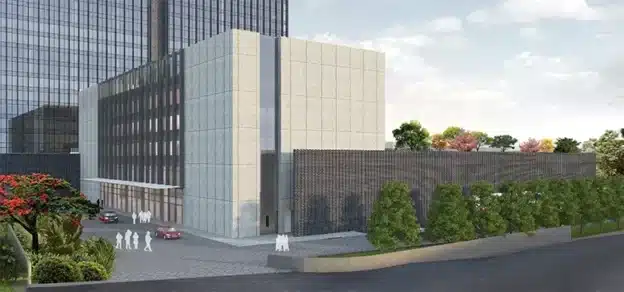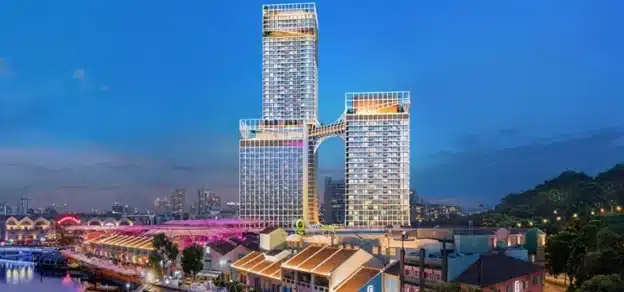In today’s world, each building must have an intelligent and responsive surface to survive. Cladding materials will never be earthquake or fire-resistant, but structurally developed surface materials with a specific function may be. Intelligent façades maybe both be responsive and pleasing to the eye. Because of their inherent qualities, readily accessible cladding materials may be responsive and interactive with the surroundings when utilised appropriately. For sustainable living, these qualities can be specified and described. Building spaces with time management, cost, availability, and maintenance, as well as designing with diverse obligations and liabilities, are today’s requirements.
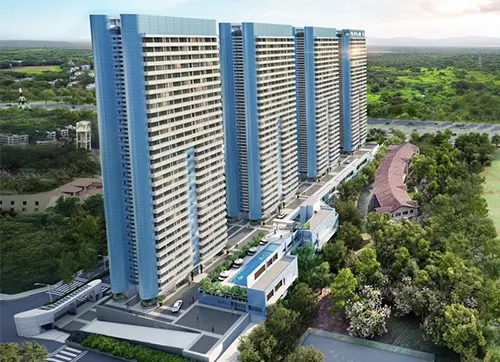
As a result, many elements are reviewed before implementation The selection of cladding material is made with care, taking into account the location, weather, surrounding region, and kind of property – residential, commercial, industrial, and so on – all of which can aid in material planning. There are materials available today that are both sustainable and easy to maintain, and buildings constructed with such materials have a low maintenance cost.
Project: Godrej Platinum
Location: Mumbai
Client: Godrej & Boyce MFG.Co.Ltd.
Architect: T.Khareghat & Associates
Consultant: Saiacon Consultant Type: Residential
Area: 15,000 Sq m;
Floors: 28
Scope of Work: Unitized & Strip Glazing, ACP Cladding, Revolving Door, MS Structure, Aluminium Louvers, Dry Stone Cladding
Glass – An Efficient and Sustainable Cladding Material
With global warming and environmental issues becoming a major issue in recent decades, every business is attempting to employ materials that will mitigate the consequences of the same. Property developers and real estate companies are also helping to improve the environment for a better future as the use of sustainable materials grows around the world. Green buildings have risen as a result of this. Glass, which comes in specific energyefficient and eco-friendly variants like solar control and tinted glass, is one of the most significant components in the construction of a green building.
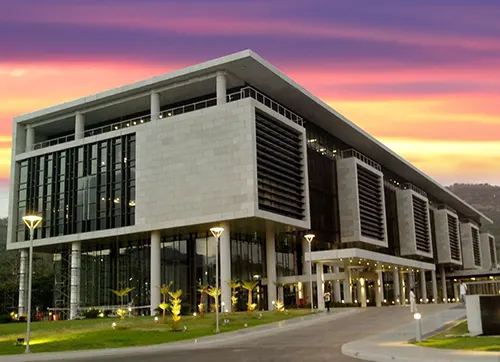
Green building development is a step in the right path. In comparison to a typical building, green buildings consume less water, optimize energy efficiency, save natural resources, generate less trash, and provide healthier places for occupants. They’re also good for the environment because most buildings employ recycled and environmentally friendly materials and have good building management systems.
Project: Reliance Learning & Development Centre
Location: Navi Mumbai
Client: Reliance Industries Limited
Architect: Perkins & Will (USA)
Consultant: X teria Façade
Type: Commercial
Area: 16,000 Sq m;
Floors: 7
Scope of Work: Unitized curtain wall system; Stone cladding; Sunshade louvers; Suspended glass; SS railing
The Use of Glass in Green Building Architecture
Developers employ glass as a primary component during building to achieve all of this. Glass is a well-known environmentally friendly material. Solar control windows and Low-E glass, for example, can deflect heat and UV rays to keep the inside temperature at a comfortable level. In addition, glass in buildings has a significant impact.
From design to appearance to thermal performance and comfort to basic aesthetics, choosing the appropriate glass for a green building is unavoidable. The fact that glass is recyclable and has little influence on the environment is the primary advantage that makes it a prominent component in green construction. Glass may help achieve better indoor environmental quality and when used properly, can also help with energy efficiency. Along with concrete benefits, glass can improve air quality, provide superb daylighting, and improve the inhabitants’ overall health and well being. From a global perspective, conservation of limited national resources is a big benefit, and the project’s widespread acceptance and increased marketability make it a feasible option for the industry as well.
Other Cladding Materials
The latest materials used for cladding are HPL, ACP, Glass, Brick, Ceramic, Stone, Metals, GFRC, Wood, and Precast façades. There is a wide list of cladding materials that are being used in the market such as:
Terracotta is a 100% natural material with an earthy appearance. It’s fire-resistant, and it’s commonly found in historic structures.
High-Pressure Laminates (HPL):
This material is mass-produced, simple to install, and comes in a variety of wood looks. lStone and ceramic tiles are readily available, eco-friendly, and have an earthy appearance.
System of façade cladding:
Aluminium Composite Panels (ACP), glass, metal cladding panels, GRC (Glass Reinforced Concrete), FRP (Fibre-reinforced Plastic), GRG (Glass Reinforced Gypsum), UHPC (Ultra-High Performance Concrete), Stone CNC (Computerised Numerical Control) are some of the most recent cladding technologies that are gaining traction in India.
Latest in Designs – Sustainable Cladding
Ventilated façade cladding, parametric façades, energy generating solar panels, GFRC, perforated aluminium panels, and kinetic façade cladding are among the most popular trends. Wall cladding materials can be chosen based on their application, building type, material type, and end-use.
Cladding Materials – Safety Norms & Standards
With the growth of high-height structures, safety standards and product verification are more important than ever. While selecting our façade material, we must keep in mind fire retardant components and check for combustibility. The Bureau of Indian Standards sets the rules and standards to be obeyed (BIS). The cladding material is often chosen based on the test and quality certificate offered by the vendors. Physical samples are checked by independent labs to validate the materials if additional quality control is necessary.
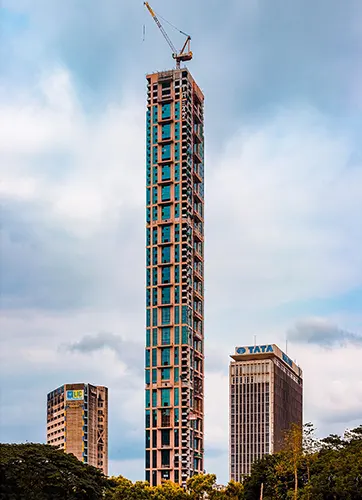
Fire safety regulations are being taken seriously all around the world. The National Building Code of India for 2016 has made several revisions. Yet, there is a lot of work to be done in terms of cladding material, since this component of the project is still incomplete. We need 2-hour fire resistance in cladding for fire separations smaller than 3.7m, according to NBC.
The cladding material used in other regions of the world, where building density has grown and fire separation is less than 3.7m, is EN13501- 1 grade A2 – s1, d0. These materials don’t need to be tested for two hours since they won’t catch fire and there won’t be any smoke or droplets. Only Firewall A2 should be used for cladding in countries like ours, where cities are ancient and unmanaged, with heavy population densities. Different fire classifications and certifications, such as ASTM E 84, BS 476 Part 7, NFPA 285, and BBA, are followed by each country or region.
Project: The 42
Location: Kolkata
Client: M/s. Chowringhee Residency Pvt. Ltd
Architect: Hafeez Contractor
Consultant: BES Façade Consultant
Type: Residential
Area: 20,000 Sqm; Floor: 60
Scope of Work: Unitized Glazing, Strip Glazing, Aluminium Windows, Frameless Glazing, Granite Stone Cladding, Automatic Sliding Door
The Market for Cladding Materials

In India, consumer knowledge of fire-resistant cladding is fast increasing, which is having a beneficial influence on the industry. The various choices of fire-retardant cladding alternatives are being influenced by changing needs. At the moment, the market offers a wide range of fire retardant HPL panels, many of which are also Green-guard certified. This qualifies these goods for usage in ‘Green Buildings’ as well as other sensitive locations including schools and hospitals. The visual appeal as per the architectural objective of a structure, the environment of the region where the project is located, the cost and requirement to safeguard from fire for a particular time, and other factors influence the selection of fire-rated/retardant or resistant materials for cladding.
Project: St.Regis Hotel
Location: Mumbai
Client: Pallazio Hotels & Leisure Ltd.
Architect: P G Patki & Associates
Consultant: Axis Façade Consulting
Type: Hospitality
Area: 29,000 sq. m;
Floor: 32
Scope of Work: Unitized Curtain Wall. Solid Aluminium Cladding, Aluminium Louver Unitized Glazing, Open able Punch Windows, Smoke Seal
